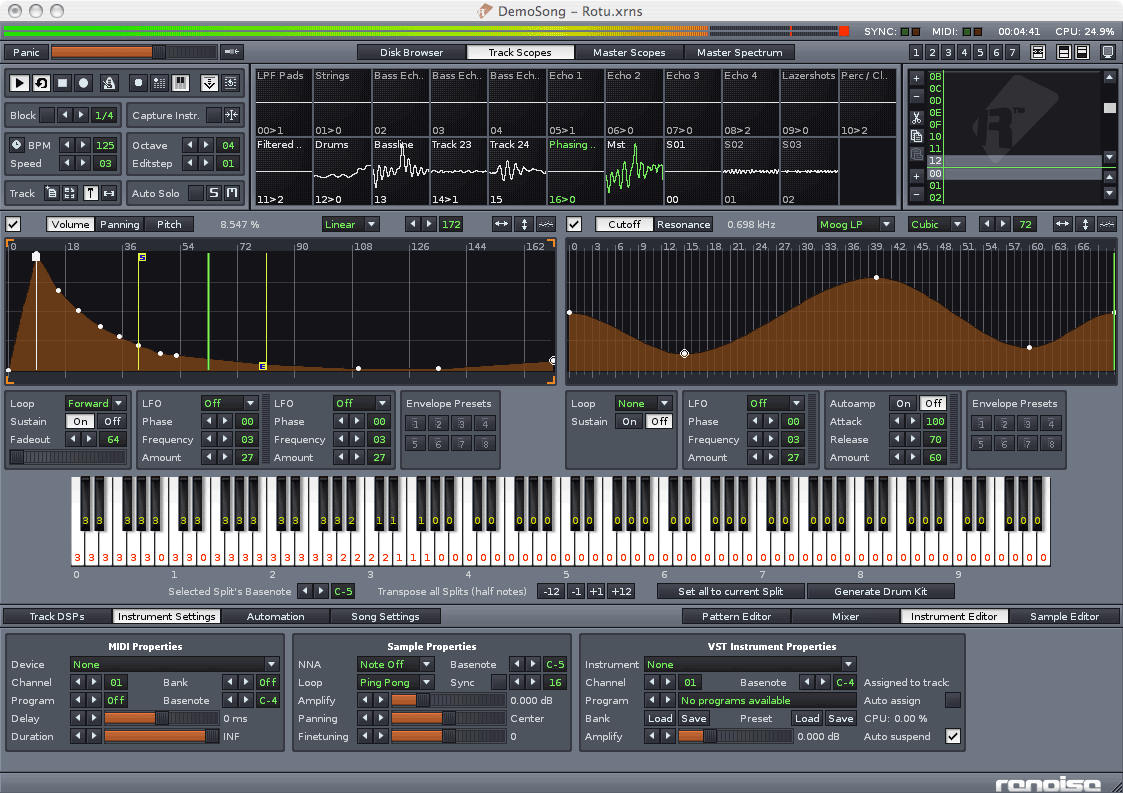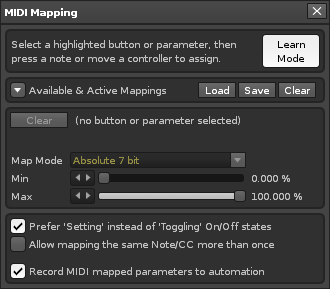

- #Renoise output bitrate how to#
- #Renoise output bitrate 720p#
- #Renoise output bitrate mp4#
- #Renoise output bitrate software#
If your available bandwidth is limited, you should reduce both your resolution and your bitrate accordingly.Using too high or low of a bitrate can lead to poor image quality or buffering for your viewers. It is important that you use the guidelines provided in the chart above to appropriately match your bitrate to the resolution you are using. Higher resolutions require a higher bitrate to achieve the same perceived quality video stream.For example, "talking heads" sitting at a desk with a relatively static shot can use the lower end of the bitrate recommendations provided above, whereas a sporting event or concert with high motion and many moving cameras will typically require a significantly higher bitrate at the same resolution to have the same perceived quality. Higher motion content requires a higher bitrate to achieve the same perceived quality video stream.This is one of the reasons why having adequate headroom in your bandwidth is so important. Depending on the level of motion in your video content and your keyframe interval, the actual encoded bitrate of the stream will go higher and lower than the target. With a variable bitrate encoder, when you set a bitrate, you are only setting a target. Many popular encoders on the market use variable bitrate encoding.Attempting too high of a resolution on too little processing power can result in degraded image quality and corrupted or interrupted streams or recordings. Be aware that higher resolutions require greater processing power to encode the stream.You will have no gain in quality and you are using more bandwidth than is necessary for you and your viewers. For example, it does not make sense to capture at 720 and stream at 1080. You should never be scaling up and streaming at a higher resolution than your original video source.Or capture at HD 720 and stream at 540 (high). For example, capture at HD 720 and stream at HD 720. It is best to either match your original video source, or scale it down.We recommend streaming at a resolution with a 16:9 aspect ratio as listed above.The table below provides recommended configurations for higher and lower bitrates and resolutions. Qualityĭepending on your video production workflow, your encoding equipment, or your available bandwidth, you may want to send lower or higher resolutions and bitrates or you may want to send up to 4 multiple bitrates instead of using IBM Video Streaming's Cloud Transcoding option. Attempting higher resolutions and bitrates without sufficient encoding resources or bandwidth can lead to poor image quality and interrupted or corrupted viewing or recordings. These resolutions should only be used when you are certain you have sufficient resources to successfully encode and send with no quality loss.
#Renoise output bitrate 720p#
So, How do I preserve the video bitrate and file size? As far as I know mp4s should have generally smaller file sizes than matroskas? Any help is really appreciated.For most applications IBM Video Streaming recommends sending a single high definition stream at 720p resolution with the following settings: Qualityįull HD 1080P and 4K streams require significantly more encoding processing power and bandwidth.
#Renoise output bitrate how to#
I really find this unacceptable, I would rather have similar file size like a 100mb or increase in the file size if necessary but preserve the bitrate and quality of the video yet I don't really see what the problem is nor do I know how to do this. So as you can see there is a drop in the video bitrate with a factor of 12 yet the size of the file has shrinked quite less in comparison. The video bitrate of the original file was 17920 kpbs and the converted was 1477 kpbs, the file size of the original video was 18.9mb and the converted was 12mb.

#Renoise output bitrate mp4#
The output was an mp4 file with the following properties: So I used kdenlive because I wanted to convert the matroska to an mp4. Note however that the video bitrate viewede from the rightclick menu and the bitrate in the bitrate output settings don't match up, the output bitrate seems to be higher, and again I don't know how this happens
#Renoise output bitrate software#
The settings of the OBS software were as follows:

As far as I know matroska files tend to be larger than mp4 files with greater quality, well, most of the time that is what I've encountered, but I understand codecs less and hence my question. The properties of the footage is as below: It is a sample screencast of some seconds recorded by the open broadcaster software.


 0 kommentar(er)
0 kommentar(er)
